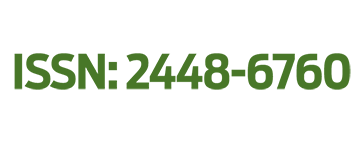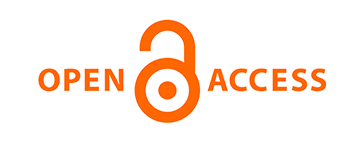Effects of three anesthesia and two tranquilizers’ protocols on stress response during handling in Oreochromis niloticus
Contenido principal del artículo
Resumen
Evaluamos tres anestésicos (ketamina 0,25 g/L, MS222 0,15 g/L; aceite de clavo 0,125 g/L) y dos tranquilizantes (xilacina 0,075 g/L, medetomidina 0,0025 g/L), que fueron administrados por inmersión en tilapia adulta. Para determiar el efecto de la anestesia y la tranquilización en la respuesta al estrés de la tilapia (Oreochromis nilotica) durante un procedimiento de manipulación.Nuestros resultados mostraron que existe una diferencia significativa en los niveles de cortisol entre los tratamientos después del procedimiento de manipulación (P = 0,001). La xilazina (298,5 ± 91,1 ng/ml) tuvo los niveles más altos de cortisol en comparación con los otros tratamientos (MS222 (89,1 ± 30,8 ng/ml); aceite de clavo (60,7 ± 60,9 ng/ml); ketamina (38,6 ± 10,8 ng/ml). ; medetomidina (33.7 ± 15.8 ng/ml) (P = 0.01). También se encontraron diferencias en los tiempos de inducción y recuperación entre tratamientos (P = 0.001). También se encontraron diferencias en los tiempos de inducción entre tratamientos (P = 0.001). Los animales expuestos a xilazina (44 ± 10.8 min) tardaron más en presentar efectos de inducción, en comparación con los demás tratamientos (P = 0.001), los tiempos de recuperación fueron diferentes entre tratamientos (P = 0.002), la ketamina (156.8 ± 80.99 min) presentó el mayor tiempo. tiempos de recuperación, cuando se compara con aceite de clavo (24,0 ± 10,37 min) y MS222 (45,0 ± 33,14 min), pero no cuando se compara con animales expuestos a medetomidina (72,0 ± 26,60 min) y xilazina (85,0 ± 46,48). palidez en animales expuestos a medetomidina.
Detalles del artículo
Citas
Sneddon LU. Clinical anesthesia and analgesia in fish. Journal of Exotic Pet Medicine. 2012;21(1):32−43. doi: 10.1053/j.jepm.2011.11.009.
Al-Hamdani AH, Ebrahim SK, Mohammad FK. Experimental xylazine-ketamine anesthesia in the common carp (Cyprinus carpio). Journal of Wildlife Diseases. 2010;46(2):596−598. doi: 10.7589/0090-3558-46.2.596.
Hunter RP. Interspecies allometric scaling. In: F Cunningham, J Elliott, P Lees, editors. Comparative and Veterinary Pharmacology. Berlin, Heidelberg: Springer Berlin; 2010. pp. 139−157. doi: 10.1007/978-3-642-10324-7_6.
Stetter MD. Fish and amphibian anesthesia. Veterinary Clinics of North America: Exotic Animal Practice. 2001;4(1):69−82. doi: 10.1016/S1094-9194(17)30052-X.
Sink TD, Strange RJ, Sawyers RE. Clove oil used at lower concentrations is less effective than MS-222 at reducing cortisol stress responses in anesthetized rainbow trout. North American Journal of Fisheries Management. 2007;27(1):156−161. doi: 10.1577/M05-103.1.
Huang W-C, Hsieh Y-S, Chen IH, Wang C-H, Chang H-W, Yang C-C, et al. Combined use of MS-222 (tricaine) and isoflurane extends anesthesia time and minimizes cardiac rhythm side effects in adult zebrafish. Zebrafish. 2010;7(3):297−304. doi: 10.1089/zeb.2010.0653.
Kreeger TJ, Arnemo JM. Handbook of Wildlife Chemical Immobilization. 4th ed. Sybille, Wyoming: Terry J. Kreeger; 2012. 448 pp.
Bastos-Ramos WP, Gonçalves NMFM, Bacila M. Anesthesia and analgesia in Antarctic fish: an experimental approach. Archives of Veterinary Science. 1998;3(1):95−100. doi: 10.5380/avs.v3i1.3745.
Ward JL, McCartney SP, Chinnadurai SK, Posner LP. Development of a minimum-anesthetic-concentration depression model to study the effects of various analgesics in goldfish (Carassius auratus). Journal of Zoo and Wildlife Medicine. 2012;43(2):214−222. doi: 10.1638/2010-0088.1.
Schwartz DD, Clark TP. Affinity of detomidine, medetomidine, and xylazine for alpha-2 adrenergic receptor subtypes. Journal of Veterinary Pharmacology and Therapeutics. 1998;21(2):107−111. doi: 10.1046/j.1365-2885.1998.00113.x.
Ruuskanen JO, Peitsaro N, Kaslin JVM, Panula P, Scheinin M. Expression and function of α2-adrenoceptors in zebrafish: drug effects, mRNA and receptor distributions. Journal of Neurochemistry. 2005;94(6):1559−1569. doi: 10.1111/j.1471-4159.2005.03305.x.
Braithwaite VA, Ebbesson LOE. Pain and stress responses in farmed fish. Scientific & Technical Review. 2014;33(1):245−253. doi: 10.20506/rst.33.1.2285.
Sapolsky RM, Romero LM, Munck AU. How do glucocorticoids influence stress responses? Integrating permissive, suppressive, stimulatory, and preparative actions. Endocrine Reviews. 2000;21(1):55−89. doi: 10.1210/edrv.21.1.0389.
Bentson KL, Capitanio JP, Mendoza SP. Cortisol responses to immobilization with Telazol or ketamine in baboons (Papio cynocephalus/anubis) and rhesus macaques (Macaca mulatta). Journal of Medical Primatology. 2003;32(3):148−160. doi: 10.1034/j.1600-0684.2003.00018.x.
Wendelaar SE. The stress response in fish. Physiological Reviews. 1997;77(3):591−625. doi: 10.1152/physrev.1997.77.3.591.
Costa LS, de Araújo FG, Paulino RR, Pereira LJ, Rodrigues EJD, Ribeiro PAP, et al. Daily rhythms of cortisol and glucose and the influence of the light/dark cycle on anaesthesia in Nile tilapia (Oreochromis niloticus): Does the timing of anesthetic administration affect the stress response? Aquaculture Research. 2019;50(9):2371−2379. doi: 10.1111/are.14118.
Anderson WG. The endocrinology of 1α-hydroxycorticosterone in elasmobranch fish: a review. Comparative Biochemistry and Physiology Part A: Molecular & Integrative Physiology. 2012;162(2):73−80. doi: 10.1016/j.cbpa.2011.08.015.
Nematollahi MA, van Pelt-Heerschap H, Komen H. High corticosterone and sex reversal in common carp (Cyprinus carpio L.) with adrenal hyperplasia caused by P450c17a2 deficiency. Aquaculture. 2014;418−419:165−170. doi: 10.1016/j.aquaculture.2013.10.011.
Nematollahi MA, Pelt van H, Komen J. Response to Stress in 17 alpha-hydroxylase Deficient Common Carp (Cyprinus carpio L.). Journal of Agricultural Science and Technology. 2013;15(2):303−310. http://jast.modares.ac.ir/article-23-5799-en.html
Willi RA, Salgueiro-González N, Faltermann S, Hettich T, Fent K. Environmental glucocorticoids corticosterone, betamethasone and flumethasone induce more potent physiological than transcriptional effects in zebrafish embryos. Science of The Total Environment. 2019;672:183−191. doi: 10.1016/j.scitotenv.2019.03.426.
Baker MR, Gobush KS, Vynne CH. Review of factors influencing stress hormones in fish and wildlife. Journal for Nature Conservation. 2013;21(5):309−318. doi: 10.1016/j.jnc.2013.03.003.
Bonier F, Martin PR, Moore IT, Wingfield JC. Do baseline glucocorticoids predict fitness? Trends in Ecology & Evolution. 2009;24(11):634−642. doi: 10.1016/j.tree.2009.04.013.
Breuner CW, Patterson SH, Hahn TP. In search of relationships between the acute adrenocortical response and fitness. General and Comparative Endocrinology. 2008;157(3):288−295. doi: 10.1016/j.ygcen.2008.05.017.
Birnie MT, Eapen AV, Kershaw YM, Lodge D, Collingridge GL, Conway-Campbell BL, et al. The time of day influences stress hormone response to ketamine. Journal of Neuroendocrinology. 2022;34(10):e13194. doi: 10.1111/jne.13194.
Hernández SE, Sernia C, Bradley AJ. The effect of three anaesthetic protocols on the stress response in cane toads (Rhinella marina). Veterinary Anaesthesia and Analgesia. 2012;39(6):584−590. doi: 10.1111/j.1467-2995.2012.00753.x.
Liu G-l, Cui Y-f, Lu C, Zhao P. Ketamine a dissociative anesthetic: Neurobiology and biomolecular exploration in depression. Chemico-Biological Interactions. 2020;319:109006. doi: 10.1016/j.cbi.2020.109006.
Wright M. Pharmacologic effects of ketamine and its use in veterinary medicine. Journal of American Veterinary Medical Association. 1982;180(12):1462−1471.
ALPHARMA. Animal Health Ltd. MS222 (Tricaine methane sulphonate) 2001 http://www.tossehuset.dk/pdf/MS222.pdf
Smith SA, Harms CA. Fish. In: J Carpenter, C Harms, editors. Carpenter's Exotic Animal Formulary. 6th ed. New Delhi: WB Saunders; 2023. pp. 22−71. doi: 10.1016/B978-0-323-83392-9.00002-2.
Keene JL, Noakes DLG, Moccia RD, Soto CG. The efficacy of clove oil as an anaesthetic for rainbow trout, Oncorhynchus mykiss (Walbaum). Aquaculture Research. 1998;29(2):89−101. doi: 10.1046/j.1365-2109.1998.00927.x.
Barbas LAL, Torres MF, da Costa BMPA, Feitosa MJM, Maltez LC, Amado LL, et al. Eugenol induces body immobilization yet evokes an increased neuronal excitability in fish during short-term baths. Aquatic Toxicology. 2021;231:105734. doi: 10.1016/j.aquatox.2020.105734.
Miyasaca M, Domino EF. Neuronal mechanisms of ketamine-induced anesthesia. International Journal of Neuropharmacology. 1968;7(6):557−573. doi: 10.1016/0028-3908(68)90067-1.
License

Veterinaria México OA por Facultad de Medicina Veterinaria y Zootecnia de la Universidad Nacional Autónoma de México se distribuye bajo una Licencia Creative Commons Atribución 4.0 Internacional.
Basada en una obra en http://www.revistas.unam.mx
- Todos los artículos en Veterinaria México OA se publican bajo una licencia de Creative Commons Reconocimiento 4.0 Unported (CC-BY 4.0). Con esta licencia, los autores retienen el derecho de autor, pero permiten a cualquier usuario compartir, copiar, distribuir, transmitir, adaptar y hacer uso comercial de la obra sin necesidad de proporcionar un permiso adicional, siempre y cuando se otorgue el debido reconocimiento al autor o fuente original.
- Al utilizar esta licencia, los artículos en Veterinaria México OA cubren o exceden todos los requisitos fundacionales e institucionales para ser considerados de Acceso Abierto.
- Los autores no pueden utilizar material protegido por derechos de autor en su artículo a menos que ese material esté también disponible bajo una licencia igualmente generosa.



